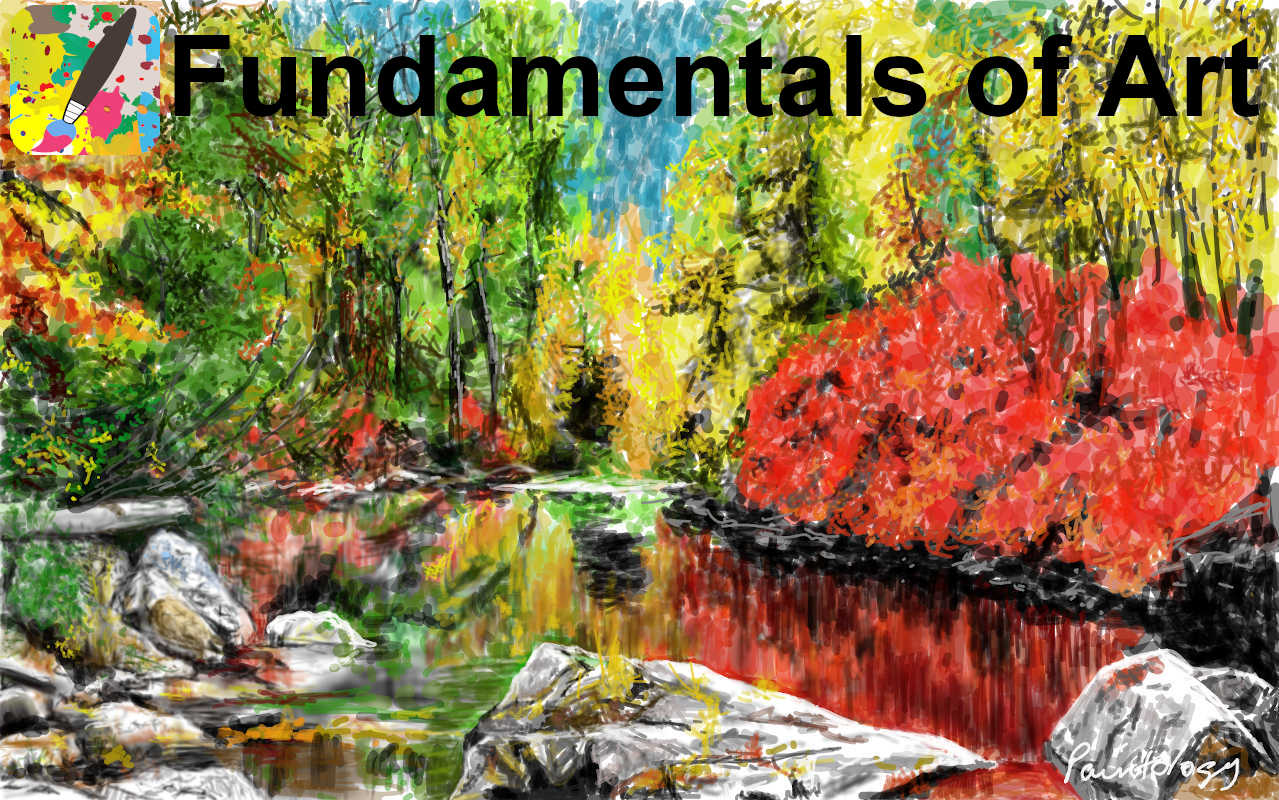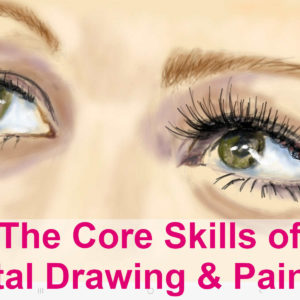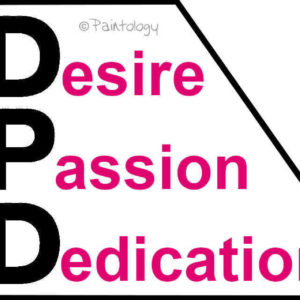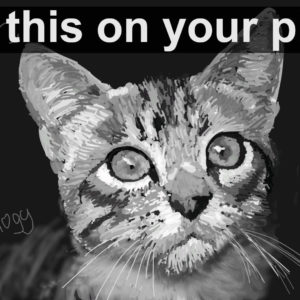The Fundamentals of Drawing & Painting
There is a lot of confusion of what exactly are fundamentals in drawing and painting.
The actual concept is easier to understand if you understand the usage in other subjects such as maths as an example. We know that fundamentals are required in maths in order to understand the derivation of a maths problem. The alternative is of course to learn parrot fashion and not worry about the fundamentals of the derivation. However, everyone will tell you that learning the fundamentals equips an individual to do a lot better in maths as well as picking up new related topics with ease.
The same is true for art where fundamentals are key skills required to become a good artist.
When it comes to digital drawing & painting, the nature of fundamentals can be a bit more complex. We know that anyone with no skills in drawing can pick up many of the drawing apps available on the Google or Apple store and start drawing. This is because all the apps come with many tools that make drawing simple but not necessarily teaching you the core fundamental skills of drawing.
In order for the individual to learn the core skills required in drawing and painting, they would need to start from the basic principles. Fundamentals can only be taught from basic principles. You can read a recent Quora post on the importance of learning the basic fundamentals.
Do Fundamentals of Art apply to Digital Drawing?
Traditional Drawing & Painting
Traditional drawing and painting are physical materials that make use of dry and wet mediums. The dry mediums consist of pencil, charcoal, pastels etc. or anything that is ‘dry’ to the touch’ The wet mediums would be the typical oils, acrylics, watercolors and other wet mediums used to make a painting.
How does traditional drawing/painting train you in the fundamentals of art?
The answer is a lot simpler than you think. The traditional materials can be thought of as having an applicator of colors using the wet or dry materials and applying this to the paper, canvas or other materials. These are the basic ways to to paint and draw but nevertheless provided the world with a proliferation of artworks from these simple tools.
It is exactly for this reason why artists in the traditional mediums are well versed in the fundamentals of art. With such basic tools to use for applying colors or pigments, the skillsets developed by good artists are essentially fundamental skills learnt from much practice in the mediums. The artists who draws well with the charcoal understands intimately the qualities of the pigments in order to turn it to their advantage to create art. Similarly, the person who draws well with the pencil has an intimate understanding of the pencil properties with the paper. They can apply this experience and knowledge to their own art creations.
In the traditional method of painting, the same principles apply, the artists who are well versed in its properties and able to direct it to produce astounding pieces of art.
The use of the traditional mediums provides clues to how a digital medium should ideally be used.
In the digital world, we have a digital canvas and a stylus to make drawings with a drawing app or software program. In it’s true idealistic form, the digital medium should be thought of as another art medium just like the traditional mediums. However, the power of the digital medium goes beyond just the basic methods of using a brush and applying the colors. This power has been harnessed over several decades to create sophisticated software that makes the tasks of drawing in the digital medium much easier. However, there is a caveat.
The advanced drawing software mentioned previously has evolved from the demands of the growth in the world wide web. The applications were primarily used to produce the graphics, illustrations, web content and online marketing material and make the tasks easy for the user. It was not designed for the purist artist coming from a traditional background. You can read a previous posts on this subject.
It is only after phones and tablets hit the market that app developers realized that there was a big niche for drawing apps. It was around 10 years ago when the first tablets by Apple followed by Android were introduced to the world that the market for drawing apps grew. A majority of the apps assumed the features and configurations of the big brethren that have fueled the growth of the internet. The apps attracted a big crowd of would be artists who had no experience in the fundamental training of art and most were drawn by the ease of use and the many digital tools it came with. The features that came with these apps as mentioned before were primarily designed for illustrators, graphic artists and professions serving a specific industry.
This adoption of the apps continue to this day and it is one of the primary reasons of the big divide between digital and traditional art. Most traditional artists will look down on digital art and make the (wrong) assumption that it requires much technical ability to create any form of art. It is no wonder since all the digital apps and software were designed with specific tasks in mind and not necessarily for purist artists to move to the new medium.
These findings that I talk about has come from years of being in this market and producing art in both traditional and digital mediums. When I first started painting in the digital medium back in 2012, I immediately saw an opportunity for the growth of apps in the Google platform with the introduction of the Android tablets. I set about producing an app that we have come to know as Paintology. It was not clear to me at that time, the reasons why I would produce such an app but I was strongly influenced by another app that had a minimum set of tools to make drawings and paintings. I was impressed by the capabilities of digital drawing and painting and worked towards launching the Paintology app which I felt was a strong contender for others to create art and improve their drawing and painting skills.
Fast forwards 10 years and the Paintology app is in it’s 40th iteration and much has been learnt from this journey.
Whilst developing the app and at the same time using it for drawing/painting, I came across interesting findings that I condensed into this article. It actually took me a long while to appreciate the reasons why I seemed to be the only person who has been challenging the norm. This is to draw as well as I do without too much effort.
Thankfully, the fog has cleared and I can see clearly the reasons behind much of the influential growth in digital art and its usage. I feel that I have a mission to tell others of my important findings and lay the ground work to bring more clarity to all. In this way, traditional artists will eventually see that the digital medium is not that different to pencil, charcoal or acrylics. They can transition their entire fundamental skills learnt in the traditional medium to the digital medium. They need not fear the new digital medium and can look at it like any other art mediums to be discovered and enjoyed and broaden their creativity.
It also brings more comfort and reassurance to the methods I have always used to making drawings and paintings in the digital medium. I now fully understand that this method comes from my ability in the fundamentals that I already possess from doing many traditional artworks. It didn’t occur to me why others could not draw like me until I had a better grasp of how the market was shifting.
Even to this day, I ignore the many digital tools that come with most apps but yet the developers of the apps continue to cram their apps with feature after feature. As a result, they pull all the newbies in a different direction where the fundamentals of art take a back seat compared to the features.
It explains why many users of the Paintology app cannot fathom how I produce artwork the way I do. They dismiss the app as lacking any features and then explains my artwork as having taken a long time to do? They say this without looking to the videos of how I made the drawing. Most of my artworks are uploaded to the Paintology YouTube Channel.
This thinking and approach to digital drawing just goes to show how discorded the divisions of traditional and digital art mediums truly are. It only confirms my views of the many users who gravitate to the drawing tools as a means to draw and forgo the fundamental training required for artistic skills and talent.
This brings me to the important points of how to get these users retrained in the art of the fundamentals? I have written a Quora post on this topic and you can read more in the link below.
https://paintology.quora.com/Do-Fundamentals-of-Art-apply-to-Digital-Drawing
Basically, the task of retraining individuals who are already immersed in the drawing tools to make their artwork will be difficult. This is because they need to unlearn the techniques and methods that they have picked up when using the app. For example if they draw a line, they expect auto correction of the lines so it appears smooth. Similarly, they may expect layers, blending tools, auto fill, to make the task of drawing easy and simple. If presented with going back to the basics and do all of this manually, you will likely end up with much resistance since they are already well versed in the tools. Therefore the task of training them will be much more challenging than say someone who is just beginning. For traditional artists to transition to the digital medium, teaching the core fundamentals should be a much easier process. Don’t get me wrong, there will be individuals who will be able to untrain their habits in order to learn from first principles and more power to them!
Digital Drawing & Painting
Now that you have a good grounding on the appreciation of fundamentals in traditional art, it makes sense that migration to the digital medium with this same philosophy is the right way to go.
It also explains my situation and experience in both traditional and the digital mediums. For example, I am an accomplished technologist and have used Photoshop and Gimp for graphics and illustrations. I know the applications have a steep learning curve but I never felt the urge to do any artwork using these tools. I even have a graphics tablet hooked to my PC for the occasional retouching of graphics and illustrations that I upload to the Paintology website. As you know many people advocate the use of these tools to do digital art and newcomers rush to buy the graphics tablet. It is a huge step that many take and I would not be surprised if many eventually give up unless they are very driven. For example to become a graphics artist, illustrator etc. which are always in high demand in the online industry.
If you come from a traditional background or want to try out digital art, my advice is to just use the tablets that are available from Apple or Samsung (Android). There are a lot more choice in the Android camps and you can get very cheap tablets well under 100 from other brands. If you are an Android user, I would suggest the Paintology Drawing App which is available from the Google play store. You could use other drawing apps but you would not have the video tutorials that come built with this app. The tutorials are designed to make drawing fun but more importantly to instill the fundamental skills that are required to make you a good artist.
Paintology Google Classroom
One of the pioneering works to date and to address the huge void in fundamental training has been the recent launch of the Paintology Google Classroom. We hope that the structured classes will help users of the Paintology app to learn the fundamentals of drawing and painting. There are many video tutorials t(over 200) that takes you step by step to developing the core skills of painting and drawing. You will find yourself progressing rapidly and feeling more comfortable drawing in the digital medium. In time, you will be producing drawings unlike anything you thought was possible. This has basically been my experience in the digital medium.
To enroll in the class, you can go to the link below and fill in a short form. Once completed you will receive an email with the link to the class, click on that and you will be able to join the class. You can introduce yourself to the other fellow students and the teacher.
Paintology Class Enrollment Form
The Paintology Class has been designed for you to interact with other students and test your knowledge and submit your work for assessment. You will improve your core skills more quickly from the Google Paintology classroom.
Paintology Drawing App (Main):
https://play.google.com/store/apps/details?id=com.paintology.lite
This app encompasses all the features of the variants such as the pencil drawing, paint by number and connect the dots. You can start with the app variants provided below if you prefer pencil drawing or develop coloring experience. In this way, you develop the necessary skills to do advanced drawings and tackle the tutorials under that category.
Pencil Drawing App:

https://play.google.com/store/apps/details?id=com.paintology.lite.pencil.drawing
If you love pencil drawing, you will like this app. The Paintology pencil drawing app allows you to make rapid pencil drawings easily and only increases your drawing skills further.
Paint by Numbers App:
https://play.google.com/store/apps/details?id=com.paintology.lite.paint.by.number
If you have ever tried the Paint by Numbers that comes in kit form, you will love this app. The app works in much the same way as the real kits allowing you to select colors and paint small regions. There are over 100 paint by numbers tutorials for you to try where you can color and learn drawing whilst having fun!
Connect the Dots App:
https://play.google.com/store/apps/details?id=com.paintology.lite.connect.the.dots
The Connect the Dots app by Paintology offers newbies to have fun joining the numbers to create the final drawing. Once done, you can use the coloring tools of the app to make a creative drawing unique to you! Try the many connect the dots examples to learn drawing and coloring fast.
Summary
The digital medium is an exciting medium for drawing and painting. There are many misconceptions by traditional artists and beginners regarding this medium and I have tried to break down these myths. Hopefully you can now go away with more insight to what digital drawing is all about and become one of the many contributors to art as has been for hundreds of years with traditional art.
Ferdouse Khaleque is a serial entrepreneur who loves everything tech and creative. He is presently working on expanding and supporting the Paintology line of apps for artists who want to learn in this medium and continue to expand their creativity. You can check out some of his other social sites from the links below.
Website:
https://www.paintology.com
Instagram:
https://www.instagram.com/paintology.app/
https://www.instagram.com/ferdousekhal/
Facebook:
https://www.facebook.com/Paintology.apps/
https://www.facebook.com/ferdouse.khaleque
YouTube:
https://www.youtube.com/c/Ferdouse
https://www.youtube.com/c/Paintology
Udemy:
https://www.udemy.com/courses/search/?p=2&q=paintology&src=ukw
Quora:
https://www.quora.com/profile/Ferdouse-Khaleque
https://paintology.quora.com/
Patreon:
https://www.patreon.com/paintology
Others:
https://www.tiktok.com/@paintology3
https://www.pinterest.com/FerdouseKhaleque/
If you want to contact Ferdouse Khaleque, the quickest way is to post on the Community section of the Paintology App and create a post putting hashtag #ferdouse.











 Digital Canvas
Digital Canvas
Leave a Reply